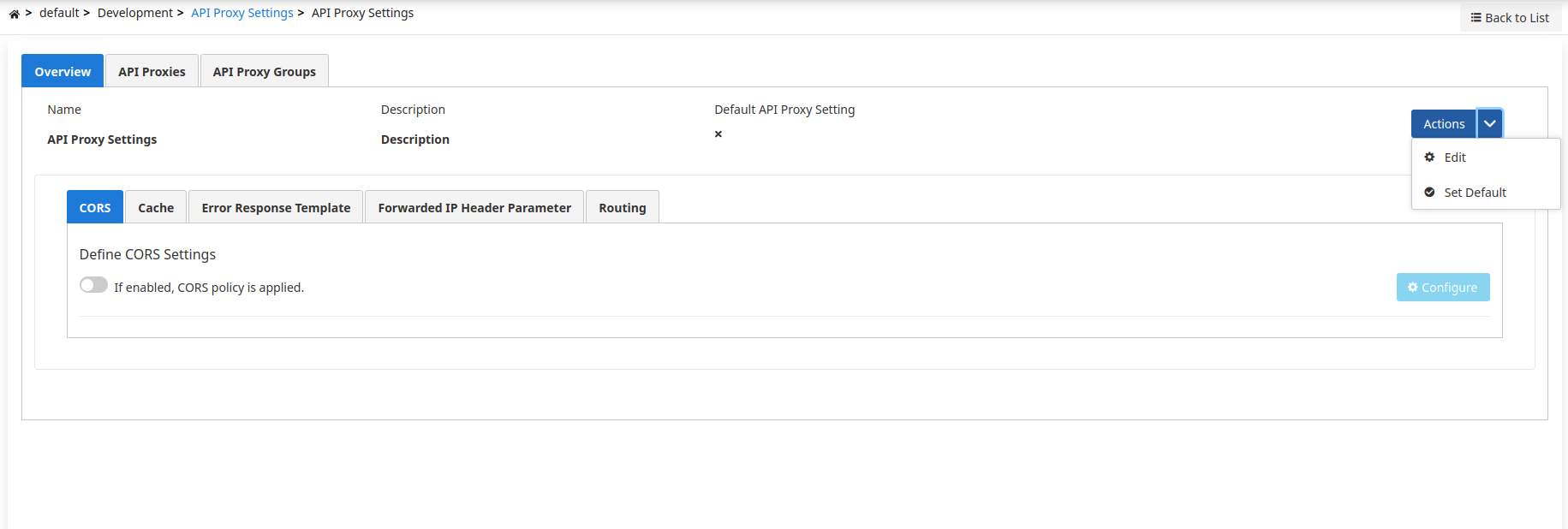Setting Groups
The Settings Group screen is used to configure and edit settings specific to API Proxies or API Proxy Groups. It allows different settings to be grouped and applied.
Existing settings groups can be edited, made default, or new settings can be defined to customize the behavior of API Proxies/API Proxy Groups. These settings are organized under different tabs.
For detailed settings, you can visit the Settings Tab page.
The image containing the API Proxy settings is provided below:

The fields used for configuring API Proxy settings are shown in the table below.
Field | Description |
|---|---|
Name | The name used for the API Proxy setting. |
Description | Descriptive information about the setting group. |
Default for API Proxies | This setting group determines whether it will be the default setting for newly created API Proxies/API Proxy Groups. To make it the default, the "Set Default" option can be used from the "Actions" menu. |
Actions |
If the "Set Default" setting is selected, if there is an existing setting group marked as default, its default property will be removed. Old API Proxies/API Proxy Groups are not affected by this change. New API Proxies and API Proxy Groups created after this setting are created with this new setting by default. |
Ayar Sekmeleri | CORS (Cross-Origin Resource Sharing): Cache: Error Response Template: Forwarded IP Header Parameter: Routing: Maintenance Mode: The API Proxy is currently in maintenance mode. This mode is used to temporarily suspend API access during system updates or scheduled maintenance operations. The API responds with a predefined HTTP status code and message structure. For detailed settings, you can visit the Settings Tab page. |
The settings created on the API Proxy Settings screen can be assigned to proxies and proxy groups. This process is carried out through a selection screen, as shown in the image.
The image containing the settings for adding API Proxy settings to Proxy and Proxy Group is provided below:


The user can select one or more API Proxies from the listed options.
Similarly, API Proxy Settings can also be assigned to Proxy Groups from the same screen.
Settings Group Deploy Operation
When any changes are made to the settings group, the status of the API Proxies and API Proxy Groups using this group changes to "Redeploy Required". Instead of deploying them one by one, the "Settings Group Deploy" feature allows all API Proxies and API Proxy Groups using this settings group to be deployed collectively to a specific environment.
When the deployment process is completed, the user is presented with a results screen called Deployment Results that shows the result of the deploy process.
An image showing the Settings Group Deploy details is provided below:
